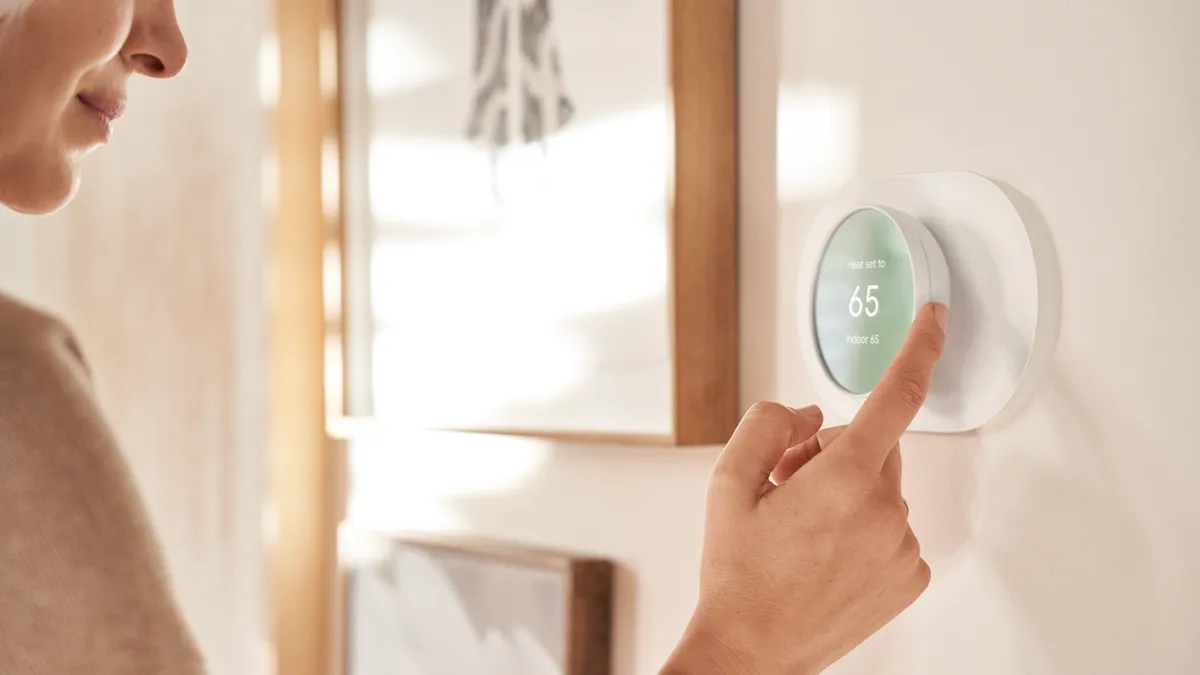Dive Brief:
- Renew Home, which bills itself as "North America’s largest residential virtual power plant,” launched Thursday out of the combination of Google’s Nest Renew service and demand response provider OhmConnect. Company officials say the combined entity already controls about 3 GW of residential energy use, and it plans to expand that to 50 GW by 2030.
- The new company is backed by a $100 million investment from majority owner Sidewalk Infrastructure Partners.
- Renew Home combines management of Google Nest thermostats and other devices with the wholesale demand response services managed by OhmConnect. The new company “will offer the best of both worlds — the ability to enable individual residential customers to get paid by the market for saving energy, and the ability to deliver energy savings at scale to utilities,” CEO Ben Brown said in an email.
Dive Insight:
Renew Home is “a combination of our wholesale market demand response programs in California, New York and Texas and the Rush Hour Rewards programs we have with more than 100 utilities across the country,” Brown said.
The company’s system is already working with Google Home’s application interface, and integrates dozens of other devices and appliances from LG, Honeywell, SunPower, Sense, and others. It will support utility demand response and VPP programs, the company said.
“This is a pivotal moment for virtual power plants,” Alan Machuga, chief technology officer of Rheem, said in a statement. The company manufactures water heaters, air conditioners and other appliances and is partnering with Renew Home.
“Rheem uniquely brings both potential for energy savings and energy storage, to which water heaters play a critical role,” Machuga said.
Water heaters are among the largest home appliance energy users, and the U.S. Department of Energy expects they will play a role in the development of virtual power plants. Tripling U.S. VPP capacity by 2030 could save $10 billion in grid costs annually, the agency said in a report last year.
Depending on how VPP capacity is defined, the U.S. has 30 GW to 60 GW of such capacity today, according to DOE’s report.
Renew Home said it wants to manage a significant amount of the expected growth in VPP capacity.
“The combined company will work with partners, utilities, and electricity markets while ensuring a simple customer experience that allows people to save money on their utility bills, manage their home energy use, and help the grid transition to 100% clean energy,” Brown said.
Renew Home is “a marriage” of what made both Google Nest Renew and OhmConnect so popular, he said, including “the ease of use, device automations, gamification, rewards, and meaningful contributions to the electric grid.”















